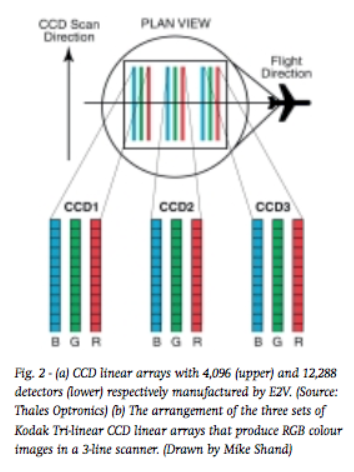The WorldView-3 instrument is a pushbroom imager, which constructs an image one row at a time as the focused image of the Earth through the telescope moves across the linear detector arrays, which are located on the focal plane.
(From "Radiometric Use of WorldView-3 Imagery", DigiGlobe technical note 2016-02-22)
Monochromatic pushbroom imagers just sweep a 1D image sensor along the track, making up the 2D image as the vehicle moves.

Simple multispectral cameras do the same, using filters over each subsequent sensor bar. That's cheap, but reduces the exposure time for each band. It appears that's what WorldView-3 does for the brighter bands.

For faster (or dimmer light) multispectral imaging, the light from the telescope is separated by the optics to form the separate bands. One way to do this is to use a diffraction grating to do the spectral separation, and then have side-by-side high-efficiency detectors.

(images from G. Petrie "Airborne Pushbroom Line Cameras")
The side-to-side extent sets the bandpass, because the grating has correlated position and frequency. You end up with something like this:

where each peak is a detector bar. The use of parallel detectors gives you complete image coverage (you don't miss parts of the Earth as you swap detectors or filters), some redundancy, good optical efficiency (i.e. you use every possible photon), and sharp edges in wavelength and position.



